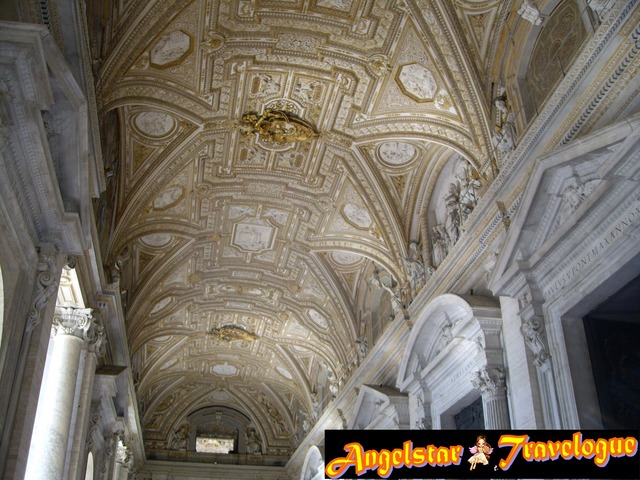
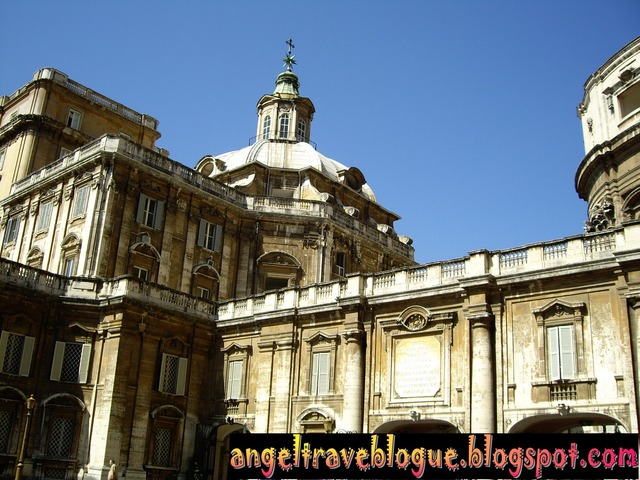
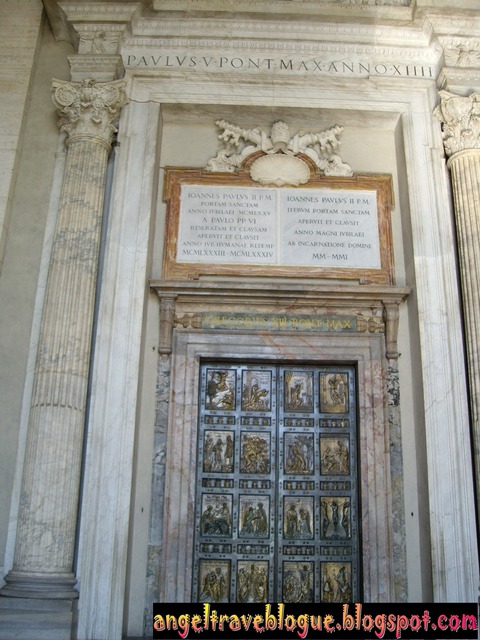
Wikipedia:
The Papal Basilica of Saint Peter (Latin: Basilica Sancti Petri), officially known in Italian as the Basilica Papale di San Pietro in Vaticano and commonly known as St. Peter's Basilica, is located within the Vatican City. St. Peter's has the largest interior of any Christian church in the world, holding 60,000 people.[1] It is regarded as one of the holiest Christian sites and has been described as "holding a unique position in the Christian world" and as "the greatest of all churches of Christendom".[2][3][4] In Catholic tradition, it is the burial site of its namesake Saint Peter, who was one of the twelve apostles of Jesus and, according to tradition, first Bishop of Rome and therefore first in the line of the papal succession.
Tradition holds that Saint Peter's tomb is below the altar of the basilica. For this reason, many Popes have been interred at St Peter's since the Early Christian period. There has been a church on this site since the 4th century. Construction of the present basilica, over the old Constantinian basilica, began on April 18, 1506 and was completed on November 18, 1626.[5]
St. Peter's is famous as a place of pilgrimage, for its liturgical functions and for its historical associations. It is associated with the papacy, with the Counter-reformation and with numerous artists, most significantly Michelangelo. As a work of architecture, it is regarded as the greatest building of its age.[6] Contrary to popular misconception, Saint Peter's is not a cathedral, as it is not the seat of a bishop. It is properly termed a papal basilica. Like all of the earliest churches in Rome,[7] it has the entrance to the east and the apse at the west end of the building.
The building is wrapped with great works of art; from all the painters and wonderful artists at that time.
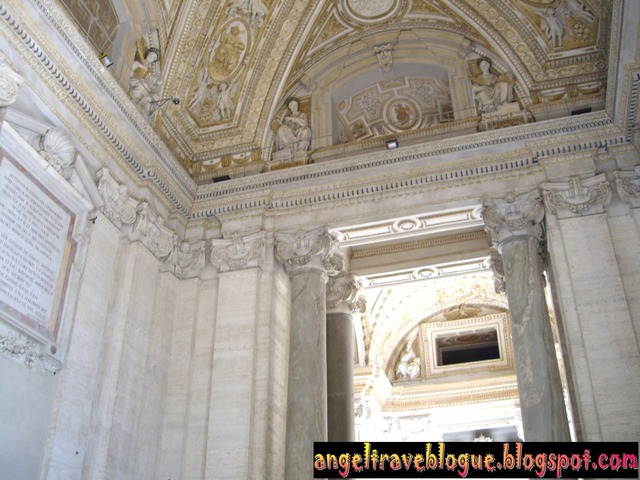
This is no ordinary door; as this is the Holy Door, which is open only for great celebrations.
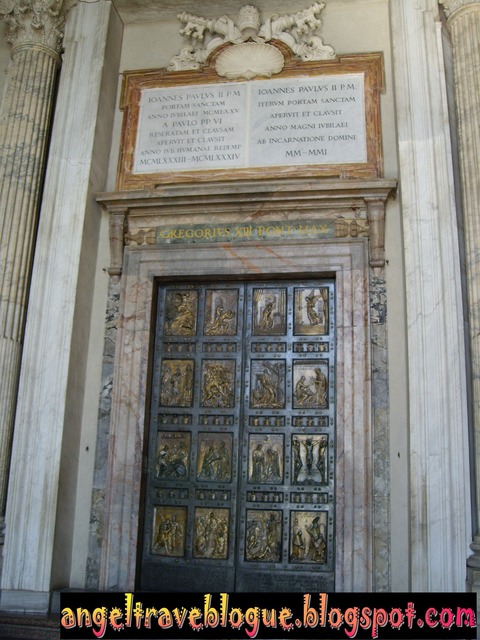 The northernmost door is the "Holy Door" which, by tradition, is opened only for holy years such as the Jubilee year. The present door is bronze and was designed by Vico Consorti in 1950. Above it are inscriptions commemorating the opening of the door: PAVLVS V PONT MAX ANNO XIII and GREGORIVS XIII PONT MAX. Recent commemorative plaques read:
The northernmost door is the "Holy Door" which, by tradition, is opened only for holy years such as the Jubilee year. The present door is bronze and was designed by Vico Consorti in 1950. Above it are inscriptions commemorating the opening of the door: PAVLVS V PONT MAX ANNO XIII and GREGORIVS XIII PONT MAX. Recent commemorative plaques read:IOANNES PAVLVS II P.M.
PORTAM SANCTAM
ANNO IVBILAEI MCMLXXVI
A PAVLO PP VI
RESERVATAM ET CLAVSAM
APERVIT ET CLAVSIT
ANNO IVB HVMANE REDEMP
MCMLXXXIII – MCMLXXXIV
IOANNES PAVLVS II P.M.
ITERVM PORTAM SANCTAM
APERVIT ET CLAVSIT
ANNO MAGNI IVBILAEI
AB INCARNATIONE DOMINI
MM-MMI
PAVLVS VI PONT MAX
HVIVS PATRIARCALIS
VATICANAE BASILICAE
PORTAM SANCTAM
APERVIT ET CLAVSIT
ANNO IVBILAEI MCMLXXV
In the jubilee year of human redemption 1983-4, John Paul II, Pontifex Maximus, opened and closed again the holy door closed and set apart by Paul VI in 1976. John Paul II, Pontifex Maximus, again opened and closed the holy door in the year of the great jubilee, from the incarnation of the Lord 2000-2001. Paul VI, Pontifex Maximus, opened and closed the holy door of this patriarchal Vatican basilica in the jubilee year of 1975.
Source: Wikipedia
Fountain of Holy Water
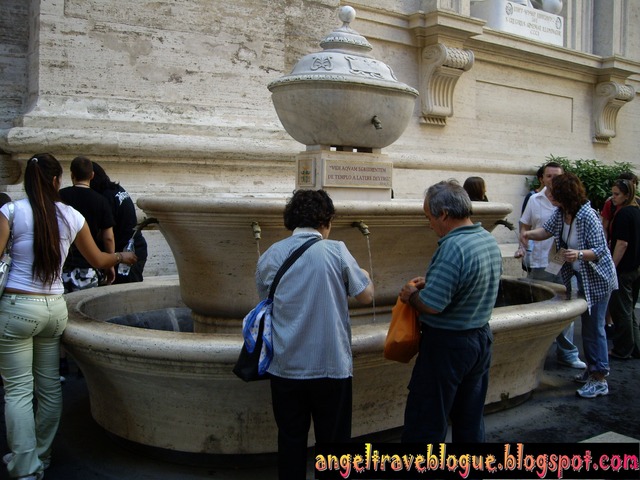
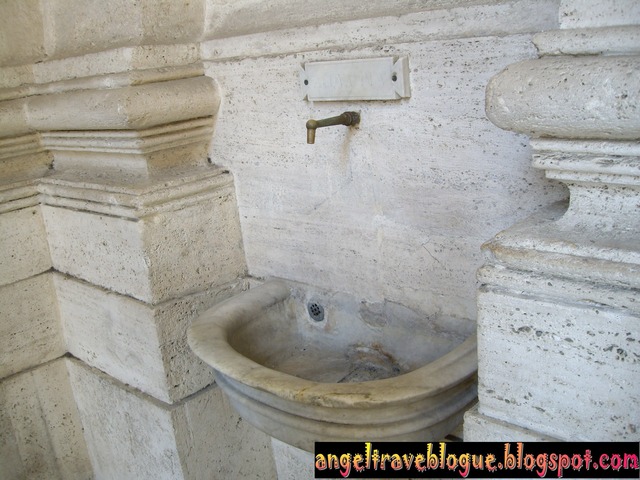
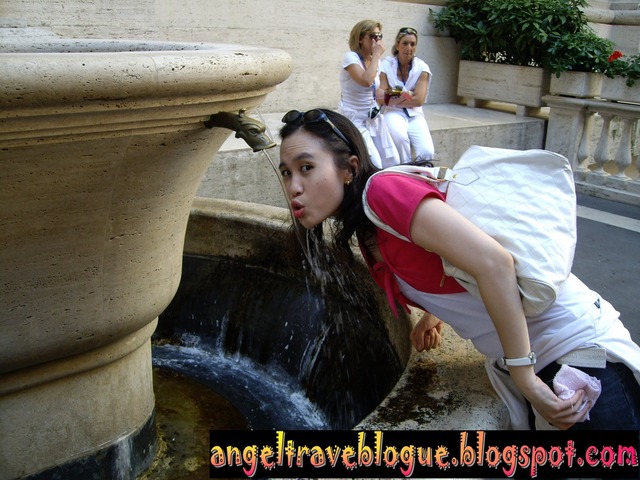
Blessed are thee from the living waters!~
There are also statues of late popes around the basilica area
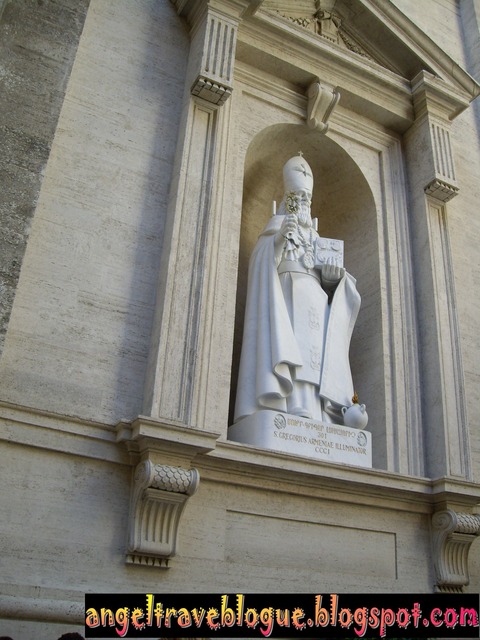
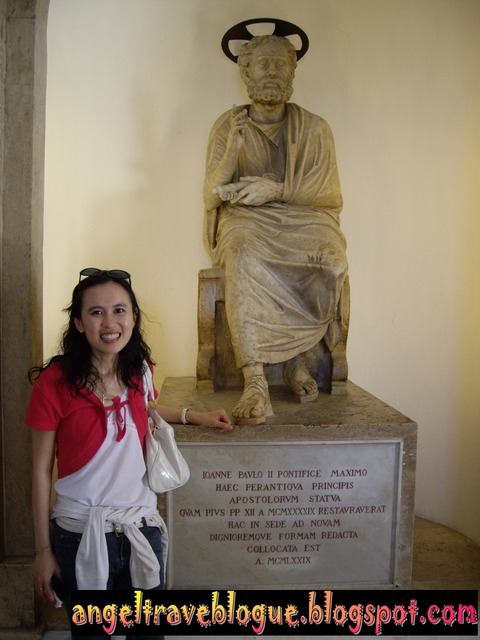
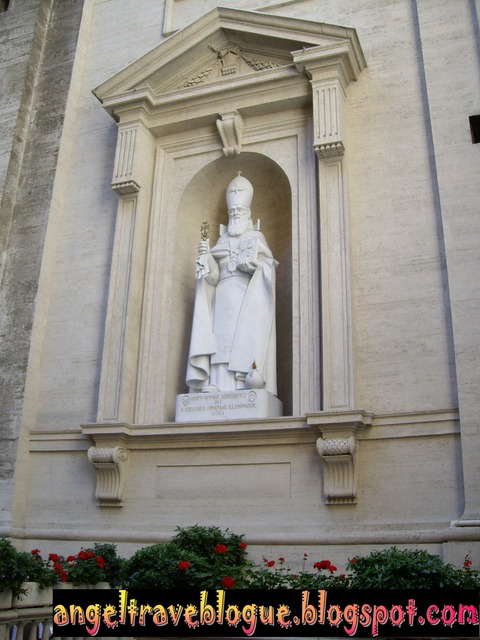
Entrance to the Papal Tombs
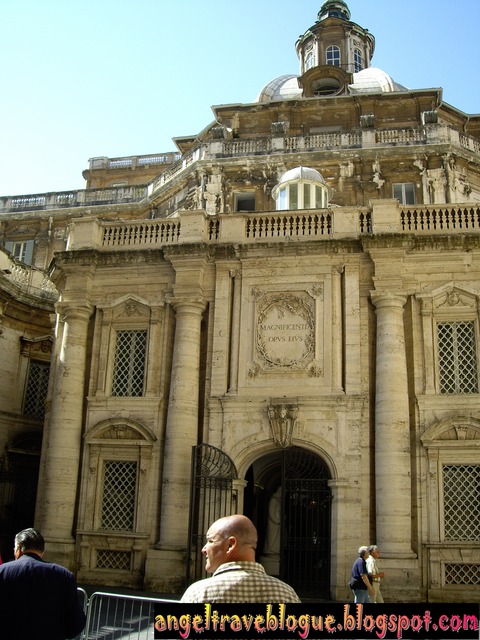
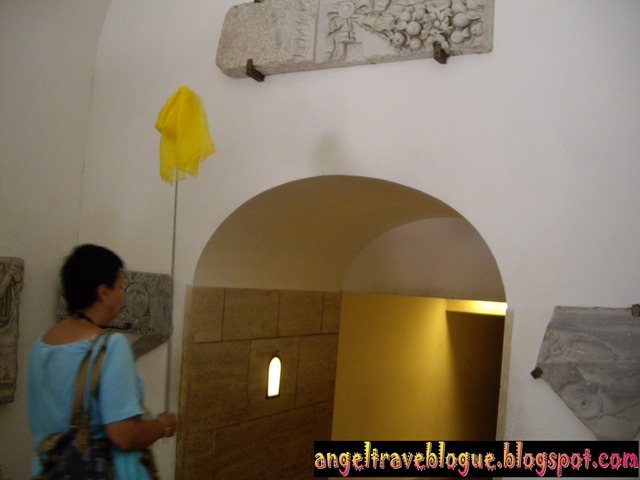
Wikipedia:
There are over 100 tombs within St. Peter's Basilica (extant to various extents), many located in the Vatican grotto, beneath the Basilica. These include 91 popes, St. Ignatius of Antioch, Holy Roman Emperor Otto II, and the composer Giovanni Pierluigi da Palestrina. Exiled Catholic British royalty James Francis Edward Stuart and his two sons, Charles Edward Stuart and Henry Benedict Stuart, are buried here, having been granted asylum by Pope Clement XI. Also buried here are Maria Clementina Sobieska, wife of Charles Edward Stuart, Queen Christina of Sweden, who abdicated her throne in order to convert to Catholicism, and Countess Matilda of Tuscany, supporter of the Papacy during the Investiture Controversy. The most recent interment was Pope John Paul II, on April 8, 2005. Beneath, near the crypt, is the recently-discovered vaulted fourth-century "Tomb of the Julii".
Due to the respect for the late popes, no photography is allowed in there.
I did spot the tomb of the late Pope John Paul II; whom everyone stood there to pay their last respects and there were some who were emotional as they prayed for him.
May his soul rest in peace.
To be continued...

No comments:
Post a Comment